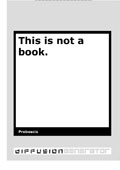Articles by Karen Martin

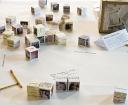

Images by Stefan Wagner (left) and Antje Lehn (right)
Proboscis recently took part in the ‘zoomandscale’ exhibition at Academy of Fine Arts and Kunsthalle Wien project space, Vienna. The exhibition took place alongside the Art and Cartography symposium, a collaboration between the Technical University Vienna, Academy of Fine Arts Vienna and RMIT University, Melbourne.
Proboscis produced a set of twenty-seven StoryCubes illustrating processes and outcomes from the Social Tapestries research programme. This included details of our collaborations, methods, tools, techniques and aims; as well as activities, artworks, interfaces, communities, partners and concepts of public authoring. The display aimed to evoke the collaborative nature of our process by inviting visitors to construct their own StoryCube landscapes and share their thoughts with other members of the audience.

Last summer Giles and I created a set of eight StoryCubes for the Maverick Machines exhibition curated by Richard Brown. At a size of 20cm x 20cm each, these were far larger than the diffusion Generator StoryCubes. For precision they were produced using a laser cutter and made out of mount board. As a result of their size, people’s interaction with the cubes can be more sociable and collaborative than with the smaller StoryCubes. These cubes have to be grasped and manipulated using two hands and people can work together more easily to create landscapes.

The images on the StoryCubes are drawn mainly from Pask’s own work and show the projects, Musicolour, Colloquy of Mobiles, SAKI (Self-Adaptive Keyboard Instructor), Entailment Mesh and Eureka, as well as photographs of Gordon himself. Other images show work by Richard Brown inspired by Pask’s work with electro-chemical computing. Gordon Pask was a cybernetician who worked across disciplines including education, art, architecture, theatre and analogue computing and the StoryCubes aimed to illustrate this diversity of interests.
Pask Parallels written by Richard Brown to accompany the exhibition has been published through the diffusion Generator and is available here, while the eBook A Manual for Maverick Machines describes the selection of images on the StoryCubes and can be downloaded here.
Images on the StoryCubes copyright and courtesy of Richard Brown, Paul Pangaro and Jasia Reichardt.
Maverick Machines ran from 24th July to the 10th August 2007 at the Matthew Gallery, Edinburgh School of Architecture.

Download A4 | US Letter PDF 757Kb
About : The Maverick Machines exhibition, curated by Richard Brown, displayed projects inspired by the work of Gordon Pask. Giles Lane and I created a set of large StoryCubes to illustrate various themes found in Pask’s work. This eBook describes those themes and the images contained on the StoryCubes.
Maverick Machines took place at the Matthew Gallery, Edinburgh School of Architecture in July 2007.
Published December 2007
Karen Martin’s work focuses on the interactions and inter-relations between people in urban environments, and the social, spatial and technological networks these form. Karen is currently an EngD candidate at University College London where she obtained an MSc Virtual Environments from the Bartlett School of Architecture in 2003. www.prusikloop.org
Welcome to the new look Diffusion website. This blog will track all of the various projects, publications, authors and collaborations which take place around the DIFFUSION eBooks, the DIFFUSION Generator and the StoryCubes. On this site you will find posts about each eBook we have published (and in the future StoryCubes too), posts about the authors as well as the various series of eBooks we have published over the years. The site also has a page with details on how to make eBooks and StoryCubes, as well as the Library listing all the published eBooks in a single, browsable page. There is also information about Proboscis’ DIFFUSION Generator – a prototype publishing-on-demand service we are currently testing (examples of which are listed on the blog), with details about how to join our private beta trial.
We are also inviting people to add reviews of their favourite eBooks as comments to individual posts, as well as comments about how people are using them; for instance we know of one example where the Performance Notations series was used as a ‘set text’ for students at an art school. As we add new eBooks and StoryCubes to the site we hope that it can become a more useful forum for sharing ideas about how they can be used as well as a site for downloading the publications themselves. Enjoy…
Non-proprietary or free approaches to creating and distributing digital tools and content have come increasingly into the public eye. The Free Software and Open Source movements – centred around operating systems, programming languages, and other utilities – have inspired (and been inspired by) a diverse group of initiatives. Apparent in all these movements is a tendency to reinforce the breadth and richness of the public domain in cyberspace. They create new kinds of collective goods, while at the same time challenging traditional copyright regimes, and questioning more individualistic modes of authorship.
To consider these issues the Collaborative Arts Unit of the Arts Council of England and the Academia Europaea, in partnership with the new Crucible agency at the Computer Laboratory, Cambridge and the Cambridge University Law Faculty’s Intellectual Property Unit, held a Conference at Queen’s College, Cambridge, in April 2001. The conference, CODE – Collaboration and Ownership in the Digital Economy – brought together leading theorists and practitioners in the media, software, law, technology and the arts to ask: How do non-proprietary principles contribute to creativity and collective action? What problems may be encountered in the legal domain? Will the current efforts of established IP rights holders to extend copyright enforcement eventually be reconciled with this emerging world of free-flowing, network-based collaboration? What lessons may be gained from alternative concepts of ownership? How can these movements interface with regular commercial practice?
The Arts Council of England’s Collaborative Arts Unit has commissioned a series of new texts from leading, UK-based researchers and writers, which contribute different perspectives and views to the issues raised by the CODE Conference, providing both a background resource and a location for the continuation of these debates. These books are published in the Diffusion eBook format, and are available both from this site, and from Metamute.
Tony White
February 2002
Publisher: The Arts Council of England
Publication Date: April 4th 2001
Series Editor: Tony White
Production: Giles Lane
Design: Paul Farrington & Nima Falatoori
Contributors:
Michael Atavar, Joe Banks, Steve Beard, Stewart Home and Matt Locke.
Proboscis has created an online application which enables people to create their own DIFFUSION eBooks without needing graphic design skills or access to professional DTP software. The service is currently in ‘beta’ testing by invitation only. However, if you would like to participate please write to us describing what you would like to use it for.
OUR VISION
DIFFUSION offers exciting possibilties for sharing of knowledge and information, especially in developing countries where lack of physical infrastructure means shipping bulky objects (like books) is difficult and expensive, but where internet communications are beginning to proliferate and low cost paper publications are still easier for most people to access and read than computer screens. For instance, DIFFUSION could be used to provide low-cost, easily updateable manuals for intermediate technologies; for promoting health awareness; for creating teching and learning resources or as a publishing platform for citizen journalism. DIFFUSION provides an alternative to traditional print and online publishing – bridging analogue and digital media. The eBooks can be shared electronically (as PDF files), by photocopy or as hand-made paper books – samizdat for the digital age.
WHAT COULD I USE THE GENERATOR FOR?
The DIFFUSION format is extremely flexible and can be used in many ways, such as for:
- publishing essays, short stories or poems
- creating simple, easy to distribute manuals and instructions
- distributing lecture notes to students
- creating lesson plans and learning diaries for students
- creating a portable family picture album
- creating a visual record of a journey
- makinga personal diary or journal
- creating a mini-portfolio for artists
- notebooks & diaries for fieldwork (e.g. for anthropology or ethnography)
- local newsletters or pamphlets
- an iterative tool for brainstorming & innovation workshops
Please note that at present the Generator is only available for testing by invitation
Development Team:
Giles Lane, Phil Ayres & Karen Martin

StoryCubes are a tactile thinking and storytelling tool for exploring relationships and narratives. Each face of the cube can illustrate or describe an idea, a thing or an action, placed together it is possible to build up multiple narratives or explore the relationships between them in a novel three-dimensional way. StoryCubes can be folded in two different ways, giving each cube twelve possible faces – and thus two different ways of telling a story, two musings around an idea. Like books turned inside out and upside down they are read by turning and twisting in your hand and combining in vertical and horizontal constructions.
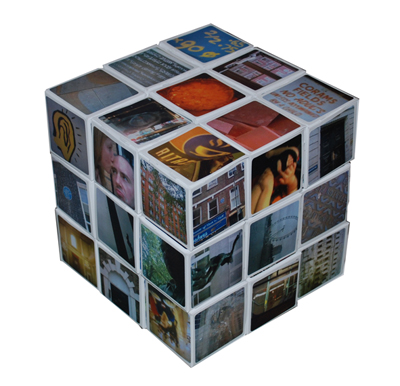
How can StoryCubes be used?
At Proboscis we use StoryCubes as poetic and playful devices for exploring ideas in three dimensions, allowing us to reveal different perspectives and make new connections and associations. We also use them as an engagement tool in our public projects, where they are particularly helpful in enabling groups of people to build shared narratives that allow them to see new perspectives. In this way they assist with storytelling and discussion in conjunction with bodystorming and other research processes that we use.
We have found StoryCubes to be very effective in stimulating group discussions and have used them successfully in our work in schools (see our Everyday Archaeology project). The process that a group of people engage in when building a StoryCube ‘landscape’ creates a tactile and tangible environment for negotiation and sharing, for seeing the different implications and connections that the stories we tell have from the perspectives of others.
Buy StoryCubes from Proboscis Webstore
samizdat for the digital age
DIFFUSION eBooks are shareable paper books that are free to download, print and make up (in A4 and US Letter PDF formats). Designed for viral distribution at almost no cost to readers, Proboscis regularly commissions new writing and creative publications which broaden discussion and debate around themes relating to our own projects and research. Proboscis also provides online design schematics, welcoming anyone, anywhere to adopt or re-interpret the format for their own uses.
Sharing Creativity
By using the internet as the distribution mechanism, DIFFUSION eBooks are accessible to a diverse readership across parts of the world that it would not be economical, or physically possible, to distribute traditional books to. Readers are encouraged to share the eBooks electronically or as material objects. DIFFUSION aims to bridge analogue and digital media by taking the reader away from the computer screen and engaging them in the process of making with their hands. Through the physical act of making the eBook, a dynamic is created that blurs the distinctions between producers and consumers.

Download A4 | US Letter PDF 2.1Mb
About : a playful exploration of DIFFUSION, eBooks, StoryCubes and the DIFFUSION Generator.
Published June 2007
Karen Martin’s work focuses on the interactions and inter-relations between people in urban environments, and the social, spatial and technological networks these form. Karen is currently an EngD candidate at University College London where she obtained an MSc Virtual Environments from the Bartlett School of Architecture in 2003. www.prusikloop.org
| This is not a book A4 | This is not a book US |
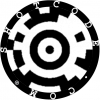 |
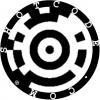 |



